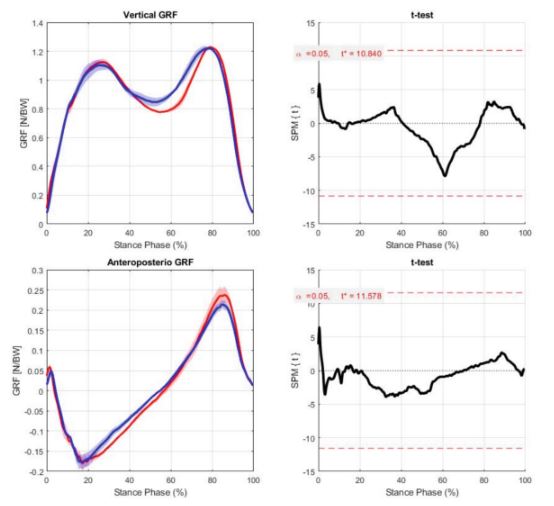Camila Duré, Eugenia Soledad Muñoz Larrosa, Lucas Dorsch, Gastón Schlotthauer, Paola Catalfamo Formento
Abstract
Although gait symmetry analysis in healthy individuals has been widely explored in recent years, particularly through the evaluation of ground reaction forces (GRF), the findings remain inconsistent. Moreover, most studies have focused exclusively on specific events, such as weight acceptance and push-off of the foot, thereby limiting the analysis to discrete moments within the stance phase of gait.
In this study, we propose the use of two temporal symmetry analysis methods applied across the entire stance phase: Statistical Parametric Mapping (SPM) and the Symmetry Function (SF(t)). Both methods were applied to GRF gait data collected from a healthy active woman.
SPM analysis revealed no significant differences between the dominant and non-dominant limbs in the vertical and anteroposterior GRF components. In contrast, the application of SF(t), combined with asymmetry detection thresholds, identified regions of asymmetry in both vertical and anteroposterior GRF at various parts throughout the stance phase.
In conclusion, the Symmetry Function detected asymmetries between limbs in portions of the stance phase that are typically overlooked by force peak detection methods and demonstrated greater sensitivity to inter-limb differences than SPM. We propose continued use and evaluation of this method to further explore its effectiveness in gait symmetry analysis.

Fig. 1. Mean and standard deviation of Dominant (red) and NonDominant (blue) limbs GRFs for the vGRF (top left) and apGRF (bottom left) and their respective t-test for vGRF (top right) and apGRF (bottom right).
Keywords
- Symmetry function
- SPM
- Gait
- Ground reaction forces
